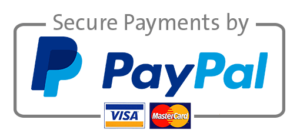Assignment Task Overview For this assignment, you will assume the role of a marketing analyst. Your consulting firm has been hired to help with a campaign effort for the client company of your selected product/service. You will communicate your results in a professional memorandum. There are three steps to this assignment. Review all three steps before you begin. Step 1: Refer to the product/service you chose for your Value Proposition Assignment. The product/service you chose for the Value Proposition Assignment in Week 2 will be the subject of this assignment. Review any feedback you received on your Value Proposition memo. You will be writing a longer, more detailed memo about the same product/service for this assignment. Follow the specific instructions outlined in Steps 2 and 3 below. Step 2: Respond to each of the following questions as they relate to your product/service. Note the research and references requirement. Your market segmentation memo will have three major sections. Respond to all the questions in each section. Your memo also must meet the research and references requirement in Step 3. I. Market Segment Analysis Determine and describe the current primary segment. The client has an interesting question. What target market can be perceived by current messaging for the product/service? Visit the public website for your company’s product/service. Based on the information available and any other publicly available information, infer the primary target market based on the messaging you find. Describe the primary segment you believe your company is targeting for this product/service. Focus only on this product/service (e.g., for Disney+, focus on just the streaming service, not the parks or other Disney offerings). Describe the primary segment in terms of the behavioral, demographic, and psychographic characteristics for the segment. Give this segment an appropriate name. See, Segmenting and Targeting Markets and Customers in Learning Resources. Classify the primary segment according to one of the VALS types discussed in the Segmenting and Targeting Markets and Customers Learning Resource. II. New Market Segments Construct new segments. Your client company is interested in diversifying and building its target customer base for this product/service in the US market. Who is currently being underserved or overlooked? Who could be better served by being addressed directly? Construct and describe two new potential segments or subsegments for your company to target for this product/service for the US market. Describe each new segment in terms of its behavioral, demographic, and psychographic characteristics. Give each segment an appropriate name. Follow steps 1-4 of the process described in the Selecting Target Markets Learning Resource. Begin by identifying the customer need for this product/service. Then, break the market down into subgroups. Develop profiles of target segments. Do some secondary research on your two segments. Note: You will not need to develop a full research plan or conduct primary research for this assignment. Of the two potential segments or subsegments you have created, which of the two has greater market potential for your company to target? Why? Classify your new segment or subsegment according to one of the VALS types discussed in the Segmenting and Targeting Markets and Customers Learning Resource. III. Recommendation Present the best new segment or subsegment. What is the new segment or subsegment you recommend your company target for its product/service? Create a simple customer persona to present your new segment and illustrate that segment in a table with the following fields and information relevant to the product/service: [segment name] [representative photo] [demographic] [background] [needs] [goals] [challenges] [perceptions] [motivations] [VALS type] See customer persona example here: 3 Examples of a Customer Persona – Simplicable Any product changes needed by this segment or subsegment? Are any product/service changes required to serve the segment you have identified? If so, what are they? How attractive/valuable is this segment or subsegment? Based on your research, is the segment you have identified attractive enough to justify an extended marketing campaign for your company? Or, should the campaign be one of more limited duration? Why? Step 3: Format your submission to comply with these requirements. Communicate your case analysis results in a Microsoft Word document formatted as a professional memorandum. Your memo will be longer than a typical one-page memo. It is reasonable to expect this assignment to be about five pages in length, single-spaced. Here is a sample professional memo: https://owl.purdue.edu/owl/subject_specific_writing/professional_technical_writing/memos/sample_memo.html Here is a tutorial on writing a professional memo: memo (umgc.edu) Address your memo to Vice President of Marketing Tiffany Morrow. Assume Ms. Morrow is your boss at a fictional consulting firm called “Destiny Marketing.” The memo is from you, and your role is a marketing analyst at Destiny Marketing. This memo is regarding the company, which is your client, and the client’s product/service. Your memo will communicate to Ms. Morrow your analysis. All questions in Step 2 must be included in your memo. A memo does not have a cover page.
Mastering the Art of Online Learning: Your Guide to Acing Online Courses
Introduction
In recent years, the popularity of online courses has skyrocketed, offering learners the flexibility to acquire new skills and knowledge from the comfort of their homes. However, succeeding in online courses requires a different approach compared to traditional classroom settings. To help you make the most of your online learning experience, this article presents essential strategies and tips to ace your online courses.
1. Set Clear Goals and Plan Ahead
Before embarking on an online course, establish clear goals and objectives. Determine what you hope to achieve by the end of the course and break down your goals into manageable milestones. Create a study schedule that aligns with your other commitments, ensuring you allocate dedicated time for coursework, assignments, and revision.
2. Create a Productive Study Environment
Establishing a conducive study environment is crucial for online learning success. Find a quiet, well-lit space where you can concentrate without distractions. Remove any potential interruptions, such as notifications from social media or email. Organize your study materials and have a reliable internet connection to ensure seamless access to course materials.
3. Actively Engage in the Course
Active participation is key to mastering online courses. Engage with course materials, including videos, readings, and interactive components. Take comprehensive notes, highlighting key concepts and ideas. Participate in discussion boards, forums, and virtual meetings to interact with instructors and peers, fostering a sense of community and enhancing your understanding of the subject matter.
4. Manage Your Time Effectively
Online courses offer flexibility, but it’s essential to manage your time wisely to avoid falling behind. Create a detailed schedule, allocating specific time slots for coursework, assignments, and studying. Break down larger tasks into smaller, manageable segments to prevent procrastination. Prioritize tasks based on deadlines and dedicate focused time to each one, ensuring consistent progress throughout the course.
5. Develop Effective Communication Skills
Online courses often rely on written communication, making it crucial to hone your skills in this area. Be concise and clear in your written responses, paying attention to grammar and spelling. Actively participate in discussions, asking thoughtful questions and providing constructive feedback to your peers. Regularly check your course emails and notifications, ensuring you stay updated with any important announcements or changes.
6. Utilize Available Resources
Take full advantage of the resources provided by your online course platform and instructors. Familiarize yourself with the learning management system (LMS) and explore its features. Access supplementary materials, such as textbooks, lecture slides, and external resources recommended by instructors. Utilize online libraries, research databases, and tutorial services to deepen your understanding of the subject matter.
7. Stay Motivated and Engaged
Maintaining motivation throughout an online course can be challenging, particularly when faced with competing priorities or a lack of face-to-face interaction. Set short-term goals and reward yourself upon their completion. Connect with fellow learners through virtual study groups or online forums to foster a sense of camaraderie. Regularly remind yourself of the benefits and personal growth associated with completing the course successfully.
8. Seek Support and Clarification
Don’t hesitate to seek support or clarification when needed. Reach out to your instructors for guidance or clarification on course material. Utilize online discussion forums to ask questions or engage in collaborative problem-solving. Leverage the support services provided by your course platform or institution, such as technical support or academic advising.
Conclusion
Online courses present unique opportunities for self-paced learning and personal growth. By setting clear goals, creating a productive study environment, actively engaging with course materials, and managing your time effectively, you can maximize your chances of acing online courses. Remember to stay motivated, seek support when needed, and make the most of the available resources. Embrace the flexibility and adaptability of online learning to achieve your educational goals.








Recent Comments